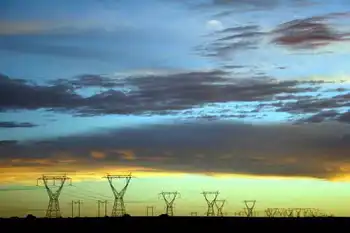Toronto cuts holiday lighting by almost 2 megawatts
By Electricity Forum
NFPA 70b Training - Electrical Maintenance
Our customized live online or in‑person group training can be delivered to your staff at your location.

- Live Online
- 12 hours Instructor-led
- Group Training Available
"The Festive Light Exchange helps us support the City's Cavalcade of Lights festival, fostering community spirit," said David O'Brien, President and Chief Executive Officer, Toronto Hydro Corporation. "It also draws people to participate in events in their neighbourhoods, and gives us an opportunity to help customers cut power consumption. It's amazing to think that such a simple program can have such impressive results. Through the Festive Light Exchange, they've saved enough power to equal the electricity demand of 600 homes."
The exchanges, held as part of Toronto Hydro's on-going drive to cut the city's electricity demand, were met with unprecedented success. Now in its fourth year, the Festive Light Exchange grew in number of events (up from 16 last year to 21 this year) and electricity conservation - about 15,000 electricity-guzzling incandescent seasonal light strings were collected, compared with 8,000 sets in 2006.
Last year, Toronto Hydro removed 1.034 Megawatts of electricity off Ontario's grid. "That's about 3 Megawatts over two holiday seasons," added Mr. O'Brien. "And, on a couple of evenings, even though it was cold and rainy, residents still came out by the hundreds. This is one of the most successful programs of its kind in Canada."
The continued growth of this year's events proves that Festive Light Exchanges are a good way to engage households in practical, cost-effective conservation practices. The move to LED lights also translates into a reduction of greenhouse gases.
"Switching to high-efficiency lights means there's less global warming-causing coal being burned in Ontario power plants," said Keith Stewart, Climate Change Campaign Manager for World Wildlife Fund Canada (WWF-Canada). "The success of this program demonstrates that Torontonians are prepared to take action on global warming, and that is a holiday gift that will keep on giving."
All copper, plastic and glass collected from the old strings of incandescents is fully recycled by Toronto Hydro.
Toronto Hydro's programs such as peaksaver, Keep Cool, and Summer Challenge for Business have successfully promoted conservation and demand management throughout the year. By year-end, Toronto Hydro will have cut the city's electricity demand by approximately 300 Megawatts since launching its programs in mid-2005.











